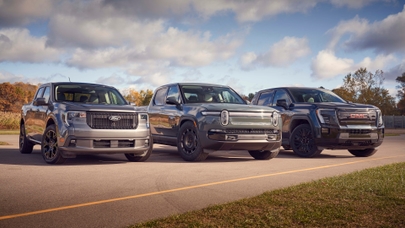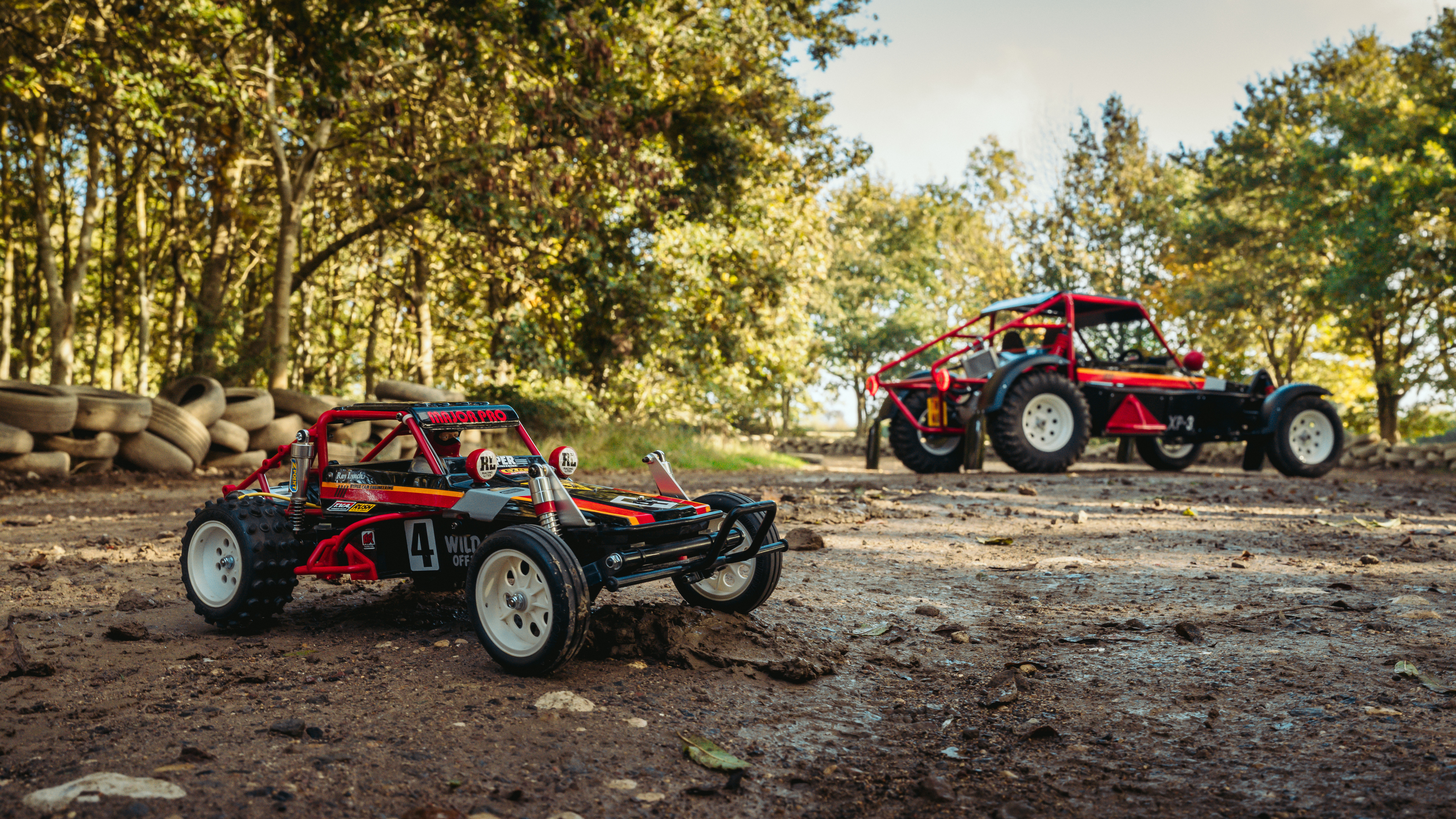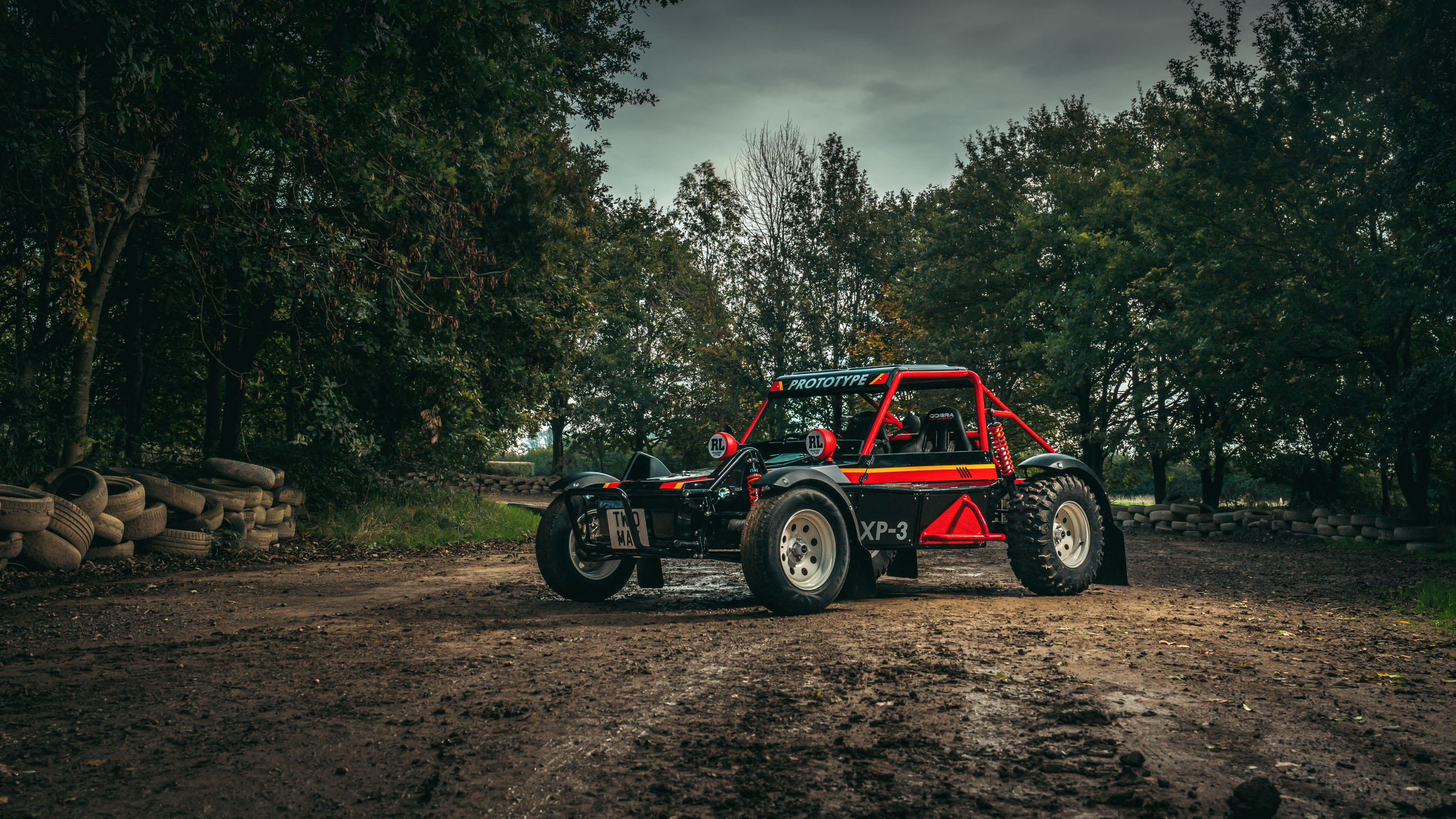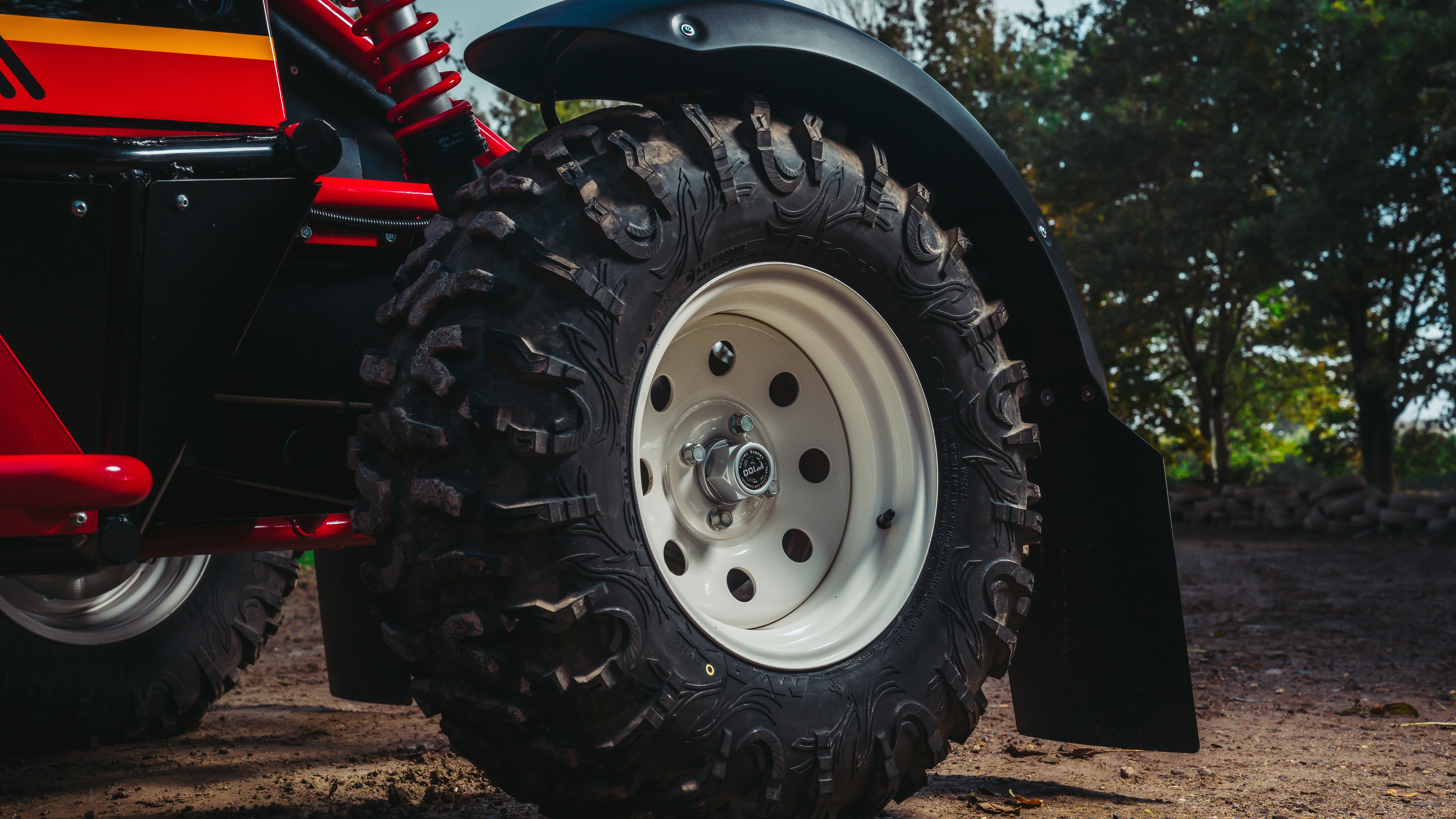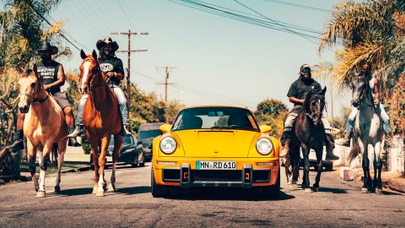
The Really Wild Show: flat out in the Tamiya Wild One Max
Who hasn’t imagined getting behind the wheel of their favourite r/c car? The Wild One Max is that dream come true
Well, this is unexpected. The radio controlled Tamiya Wild One is proving trickier to master than the full-size TWOM. Having spent most of the day at improbable angles in the Max, I’m now encrusted in mud and nursing what you might call ‘oversteer thumb’ (I forgot to wear gloves and the Alcantara on the wheel has removed a layer of skin). My arms ache, my temples are throbbing, and I’ve spent so long sideways my inner gyro feels skewed. Maybe that’s why I’ve managed to propel the r/c car into and over my own feet. Twice.
Blame Mitch and Matt. They’ve been filming this adventure, and wanted some footage of the little Tamiya in action to go with the full-size stuff. This is one of the company’s hero toys, a 1/10th scale plastic buggy that first appeared in 1985, with a fella called Ray Lynch at the wheel. Ray was piloting a device that managed to look simultaneously simplistic, hedonistic and futuristic. Highly sought after now, a box fresh and unmolested example of an ’85 original Wild One will cost you about a grand on eBay.
This is still £34k less than the cost (before VAT) of the Max, which might seem excessive for what is essentially a big toy. It doesn’t even come with wipers or a windscreen as standard. It hardly matters, because all the right stuff is here in all the right places, to spectacular effect. Against some exotically engineered competition, a 38bhp, 48V electric buggy that weighs 500kg might just be the most unashamedly fun car of the moment.
Photography: Mark Riccioni
And it has provenance. TWOM is the work of The Little Car Company, an ingenious startup that’s spent the past three years creating meticulously engineered 75 per cent scale versions of significant historic cars, such as the Aston Martin DB5, Bugatti T35 and Ferrari 250 Testa Rossa. None of these are companies that parcel out their brand equity lightly.
Now the LCC has reversed its shrink ray, secured the approval of a presumably bemused but delighted Tamiya, and scaled up the Wild One. In the flesh, the Max is simple but irresistible. It uses a welded steel spaceframe chassis, with its cockpit now sufficiently widened so there’s room for two full-size adults. The jagged protuberances on the original’s front suspension turrets have been reworked to provide better forward visibility and offer a modicum of pedestrian protection.
More significantly, the Wild One Max complies with L7e regulations, so it’s technically a quadricycle and therefore road legal. In that sense, it’s akin to the Citroen Ami or Fiat Topolino although it swaps their Euro chic for a kind of improvisational, mullet-haired Mad Max howl in the face of the looming apocalypse.
What else have we got? The seats are supplied by Cobra, the long-travel springs are from Eibach, the adjustable dampers are Bilsteins, the brakes from Brembo. Chunky Bighorn tyres from off-road specialist Maxxis encircle the 14in rear wheels. The front suspension now has double wishbones rather than trailing arms. So there’s no need to have your osteopath on speed dial.
Order one of the 100 Launch Editions and you get something resembling a dash made of carbon fibre. There’s a 5in digital display from Würth that features a cool little Tamiya logo graphic at the bottom and gives you range and speed readouts. A set of six chunky buttons sit to the right of the display and Sparco wheel, including the drive controls. F for forward, N for neutral, R for reverse (although this prototype has an additional makeshift panel with a big red stop switch). To the left is another sextet of buttons for the wipers, lights, etc. It’s all wonderfully user friendly, and very satisfying to those of us who are allergic to the haptics in modern cars. It’s also conceptually similar to marine applications, for good reason: the Wild One Max’s interior can be hosed out.
Tucked up inside the polycarbonate body is a 14.4kWh battery pack that’s split into eight removable sections, each one the size of a briefcase. These can be charged individually or as one unit. The lithium-ion batteries live at the rear and they’re easy to access under a lockable panel. The low voltage limits how rapidly they can be charged and how much energy can be extracted, but it makes the Max easier to work on, safer to use, and allows for the swappable setup.
The electric motor is also rear mounted and good for peak power of 38bhp, less than that in continuous use. Although obviously modest, it should be sufficient given the Max’s equally modest weight. It’ll do almost 60mph all-out, while range is about 125 miles on the road, nudging 65 off-road depending on the degree of tomfoolery.
Which raises the question, what’s the use case? According to Ben Hedley, founder and CEO of The Little Car Company, owners might do the school run in it or maybe upstage a supercar or two at a weekend meeting. Ben owns a Nissan GT-R, regularly races a Caterham and is an inveterate thrill-seeker with an interesting history in competitive skiing, so he knows what he’s on about. It would also be a hell of a commuter vehicle, all the more so if your journey to work involves traversing a field.
Top Gear
Newsletter
Thank you for subscribing to our newsletter. Look out for your regular round-up of news, reviews and offers in your inbox.
Get all the latest news, reviews and exclusives, direct to your inbox.
“With our little cars we’re trying to demonstrate that you can have fun at 20mph and don’t need 1,000bhp,” Ben says. “When we decided to take a little car and make it full size, as a kid of the Eighties Tamiya was the obvious choice to me. So we called them and they said yes. The Wild One was the last thing they did that was visually proportionate, the later cars had a tiny little cockpit with just a head visible. We wanted this to be usable. They didn’t have CAD, because the original predated all that. So we took their museum car and Sam [Evans, design engineer] measured and scanned it so we could recreate it.”
The project evolved rapidly, as Hedley explains.
“At first, we thought it would be Honda Pilot sized, cheaper and less powerful. We were aiming for something that would cost around £10k, but that’s tricky, even for a little EV. And when we began showing it to people they said, ‘make it bigger, make it faster, and make sure it has two seats. And make it road legal'.”
We’re not driving it on road today, and have been invited instead to push the Max to the max at the London Rally School. It’s a brilliant little course, muddy and slippery as hell. The Max is simple enough off to get into, its slender doors barely qualifying as such, ingress and egress helped by a detachable steering wheel. The seats are soft but supportive, the four-point harness easily adjustable, the driving position a little tight for six-footers but tolerable. The wheel is close to your chest. Flick the power button on, let the system boot up for a few seconds, engage F, and off you go. Couldn’t be easier.
It doesn’t take long to learn the track, or the Max. The front end setup is soft-ish to begin with and the nose tucks in nicely with some reassuring understeer. But that’s easily and effectively dealt with by burying the accelerator pedal into the bulkhead, summoning the spirit of Colin McRae and giving it the big send. Load it up into the corner then back off suddenly and the rear arcs round in a heartbeat. Get some momentum going and the Max’ll transition from left to right so progressively that pretty soon you’ll be picking your spot and putting the car right there with alarming, hilarious accuracy, especially if it happens to feature a muddy puddle. The cockpit now resembles a lagoon, the switchgear slathered in mud.
There’s a long-ish corner on the way back round the loop where you can hold it in a delirious right-hand drift, then flick it the other way and power through, sending stones and clumps of dirt airborne. All this at manageable speeds in an EV, although it’s more engaging the faster you go. A masterclass in the beauty of low mass entertainment, it’s also proof that a little can go a very long way.
Well, quite a long way. Pretty soon I decide that the Max could use more power. Not much more, maybe another 20bhp, just enough to maintain full-fat power slides. And because it’s only 48V, what power there is drops off noticeably when the batteries drop to 50 per cent charge. That aside, and a minor hissy fit from the battery pack following a few big air jumps, this prototype Max hasn’t missed a beat. It feels almost bulletproof.
Yoshio Tamiya was awarded the Order of the Sacred Treasure, 5th Class by the Japanese government in 1976. I have no idea what that is, but he’d have been amused and honoured to learn that one of his company’s creations has found such absorbing new life. And it comes with a sticker sheet.
Trending this week
- Car Review
Chery Tiggo 9




